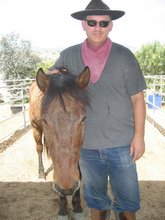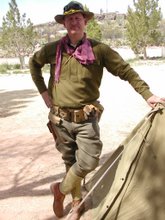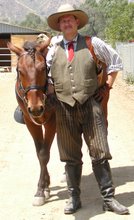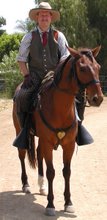
Today's horse is the Icelandic. I'm a sucker for these guys and they're amazing to watch. From Wikipedia:
The Icelandic horse is a breed of horse that has lived in Iceland since the mid-800s AD, having been brought to the island by Viking settlers. The Icelandic Horse originated from breeds taken from Scandinavian and European countries to Iceland during the original and subsequent settlements but has now been bred for centuries without the addition of outside bloodstock. Because they are often pony-sized, they are by some referred to as "Icelandic ponies". However, in most places, the breed is considered a "horse" and to call it a "pony" is likely to offend many breeders. mtDNA studies link them to other European pony breeds.[1]
Regardless of size or horse/pony designation, Icelandic horses can easily carry the weight of a large grown adult.
The Icelandic horse is a breed of horse that has lived in Iceland since the mid-800s AD, having been brought to the island by Viking settlers. The Icelandic Horse originated from breeds taken from Scandinavian and European countries to Iceland during the original and subsequent settlements but has now been bred for centuries without the addition of outside bloodstock. Because they are often pony-sized, they are by some referred to as "Icelandic ponies". However, in most places, the breed is considered a "horse" and to call it a "pony" is likely to offend many breeders. mtDNA studies link them to other European pony breeds.[1]
Regardless of size or horse/pony designation, Icelandic horses can easily carry the weight of a large grown adult.

Probably the most beloved trait of the Icelandic horse is its unique character. FEIF's breeding aim for spirit describes a horse that is very willing, brave, happy, forward, cheerful, confident, and offers its best with very little encourangement. A horse that tries to please the rider, is sensible, easy to ride, and easy to handle.

Iceland has never had any predators large enough to be any threat to a horse. Instead it is a country with tremendous environmental dangers, such as harsh extremes in weather, volcanic activity, extremely varied and treacherous terrain, quicksand, rock slides, rivers with changing currents, etc. Therefore, the ability to assess a situation rather than the instinct to flee has been central in the survival of the horse. Even today Icelandics seem to lack the "spookiness" of most other breeds and are more inclined to think through a situation before making the decision to run. They also seem to have a much higher pain tolerance than other breeds and have a strong will to survive even the toughest conditions. There are many old Icelandic tales of horses that overcame tremendous obstacles to carry their riders safely to their destination, and where the sense of the horse was instrumental in gaining safe haven and avoiding death and danger.
Traditionally in Iceland, young horses and those not under saddle were allowed to run free, in large herds in the highlands. Because of environmental concerns, this practice is only continued in parts of Northern Iceland today. Even in other parts of Iceland the horses are often left in vast pastures, largely on their own, for long periods of time. All horses in Iceland are given an annual vacation in late fall of each year, where they can be in herds left alone. The Icelanders feel that it is important that the horse grows up learning how to be an independent thinker, to take care of itself, and to not be too dependent on humans. The Icelanders want their horses to be thinking partners to their riders. They also believe that horses allowed to run free at least part of the year grow stronger, become more sure footed and are more self-confident.
In general, Icelandics are trained to be spirited under saddle. Almost all Icelandics tend to be very calm and easy going on the ground, but most will be surprisingly forward when ridden, when trained that way. Icelanders call this spirit "willingness" or "forwardness". And a willing horse, by Icelandic standards, is a forward horse indeed. A willing horse will always offer more energy to the rider. However as in all other breeds, the amount of willingness varies from individual to individual, some being very willing, others not. Some Icelandics even seem to have the talent to adapt to the skill level of the rider.
In the early days, the rugged Icelandic climate meant that keeping only the best horses was worthwhile. Cramped quarters meant that people, horses and other animals would often share tight spaces. Therefore, any horses that showed faults in character were quickly culled and used for meat. This practice continues today in Iceland and horsemeat is exported regularly to mainland Europe and Japan. This is probably the strongest reason that, today, you will rarely find an Icelandic that would ever kick, bite or even lay its ears back at a human for any reason. Additionally, growing up in a herd may mean that such attributes are tempered when the antics of youngsters are not tolerated by their elders.
Although some Icelandics are more friendly than others, the majority still enjoy the company of people. And most Icelandics are known to form very close bonds with their owners.
Icelandics are considered quite intelligent. As such they often learn new things very quickly. However, as they are bright they usually do not like to be drilled and they must constantly be challenged with new and different tasks to stay interested and willing. Although Icelandics are sometimes schooled in a ring or on an oval track, most like to be trained out on the trail enjoying nature.










4 comments:
I love my Icelandic Horses, but the Wikipedia thing is sometimes not correct.
They use a lot of mechanical aids to get the gait. Because of that, it's like a viscious cycle and the natural gait is less apparent in subsequent generations, and therefore, more need of mechanical aids!
I love my Ice Pony!
Interesting- it sounds like you're forcing the gait out of the horse rather than the horse naturally developing it on their own with as they're ridden.
I'd love to get an Icelandic one day but I'm probably way too big at 6'1"! :-)
As a follow-on, I wonder how they do in a place with a warm climate such as Southern California?
They look pretty tough and I'd bet they'd be cool on the trail ride. As a cavalry horse, probably not! :-)
Some of the bits I've seen for these guys look a tad harsh. I don't use anything heavier than a snaffle bit on my guy and that seems to get the job done. In my experience, harsh bits just seem to piss off the horse more. But that's just me. The bottom line is: LIGHT HANDS.
Post a Comment